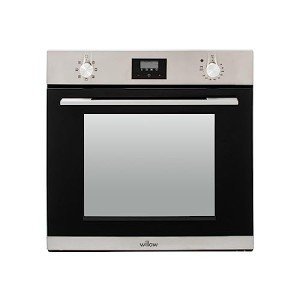Learn About Built In Range While Working From At Home

Comprehending the Built-In Range: A Deep Dive Into One of one of the most Versatile Programming Features
The built-in function range() is one of the most commonly used features in shows, particularly in Python. Its simplicity and flexibility make it a necessary tool for developers, engineers, and data scientists alike. In this article, we will check out the essential elements of the built-in range function, its syntax, use cases, and some useful examples to assist you leverage its power in your coding undertakings.
What is the Built-In Range?
In intergrated oven , the range() function produces a sequence of numbers. It is frequently utilized for model, particularly within loops, making it possible for developers to carry out a block of code a particular number of times without by hand defining each version.
Syntax of the Range Function
The range() function can take one, two, or 3 arguments, and its standard syntax is as follows:
range( start, stop, step).
start: The starting point of the sequence (inclusive). If left out, it defaults to 0.
stop: The endpoint of the sequence (unique). This argument is needed.
step: The difference in between each number in the sequence. If left out, it defaults to 1.
Examples of Using Range.
Standard Usage: Using range() in an easy for loop to print numbers from 0 to 4:.
for i in range( 5 ):.
print( i).
Output:.
0
1.
2.
3.
4.
Defining a Start and Stop: You can specify both a starting point and an endpoint:.
for i in range( 2, 6):.
print( i).
intergrated oven :.
2.
3.
4.
5.
Using a Step Value: The step specification permits you to manage the increments:.
for i in range( 0, 10, 2):.
print( i).
Output:.
0
2.
4.
6.
8.
Counting Backwards: The step can likewise be unfavorable, permitting counting down:.
for i in range( 5, 0, -1):.
print( i).
Output:.
5.

4.
3.
2.
1.
Practical Applications.
Repeating Over he has a good point : While utilizing range() prevails in for loops, it can likewise work for iterating over the indices of a list.
fruits = [' apple', 'banana', 'cherry'] for i in range( len( fruits)):.
print( f" i: fruits [i] ").
Output:.
0: apple.
1: banana.
2: cherry.
Producing Number Sequences: The function is convenient for creating series of numbers, which you may require for algorithms or data adjustment.
number_list = list( range( 10, 21)).
print( number_list).
Output:.
[10, 11, 12, 13, 14, 15, 16, 17, 18, 19, 20] List Comprehensions: range() works beautifully with list understandings for more condensed expressions.
squares = [x ** 2 for x in range( 5)] print( squares).
Output:.
[0, 1, 4, 9, 16] Conclusion.
The built-in range function is a fundamental feature in Python that supplies a basic method to generate series of numbers, which can be used for a variety of programming jobs. Whether you are dealing with loops, creating lists, or carrying out algorithms, comprehending how to make use of range() is essential for efficient Python coding. As you continue to check out the language, you'll certainly find brand-new ways to utilize this effective tool, making your programs jobs more effective and streamlined.
